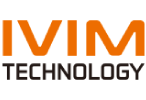Innovative solutions to accurately detect and fully characterize exosomes and other extracellular vesicles.
Automated microscopy and Spatial Proteomics
Automated microscopy and image analysis
Discover
Related topics
The chicken chorioallantoic membrane as a low-cost, high-throughput model for cancer imaging

Apr 4, 2024
Here, we assessed the chicken chorioallantoic membrane (CAM) as an alternative to mice for preclinical cancer imaging...
A microthrombus-driven fixed-point cleaved nanosystem for preventing post-thrombolysis recurrence

Apr 3, 2024
A thrombin-responsive and fixed-point cleaved Fu@pep-CLipo was developed for highly efficient and precise thrombolysis...
Multiplexed tissue imaging using the Orion platform to reveal the Spatial Biology of Cancer

Mar 27, 2024
In this webinar Prof. Sandro Santagata, will reveal how Orion high-plex imaging and the use of this data, is valuable...

Mar 22, 2024
Mission Bio’s Tapestri Tool May Hold the Key to Informing Treatment Options for Multiple Myeloma.
A 19-color single-tube Full Spectrum Flow Cytometry for the detection of Acute Myeloid Leukemia

Mar 13, 2024
This recent publication in Cytometry Part A describes the development and comprehensive workflow of a single-tube,...
18F-labeled somatostatin analogs for somatostatin receptors (SSTRs) targeted PET imaging of NETs

Mar 11, 2024
A novel 18F-radiolabeled somatostatin analogue, [Al18F]NODA-MPAA-HTA, was synthesized and evaluated for positron...
Discover Yokogawa CellVoyager CQ1: Benchtop High-Content Analysis System

Mar 8, 2024
Unlike flow cytometers, the CellVoyager CQ1 confocal quantitative image cytometer does not require pretreatment such as...
Real-time and quantitative analysis of Macrophage Phagocytosis with RTCA eSight

Feb 23, 2024
The eSight is currently the only instrument that interrogates cell health and behavior using cellular
impedance...
Visualization of Tumor-Related Blood Vessels in Small Animals by Photoacoustic 3D Imaging System

Feb 21, 2024
In Vivo Label-Free Observation of Tumor-Related Blood Vessels in Small Animals Using a Newly Designed Photoacoustic 3D...
Therapeutic effects of mesenchymal stem cells in myocardial infarction

Feb 19, 2024
Intrapericardial hydrogel injection generates high cell retention and augments therapeutic effects of mesenchymal stem...

Jun 10, 2021
Once bound to the surface of the ExoView chip each individual exosome can be sized, counted and characterized in terms of protein expression. Fluorescent antibodies can be added (in 3 channels so that up to 4 proteins can be measured on individual exosomes with single-molecule sensitivities meaning that even the smallest of exosomes and can be detected and characterized. Exosomal cargo can also be detected through the application of cargo protocols to detect proteins not expressed on the surface of exosomes.
Thursday, June 24th, 14:00 CET
Andrew Malloy , VP of Sales and Marketing, NanoView Biosciences
Get more info
Brand profile
Innovative solutions to accurately detect and fully characterize exosomes and other extracellular vesicles.
More info at:
https://www.nanoviewbio.com/